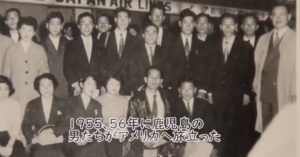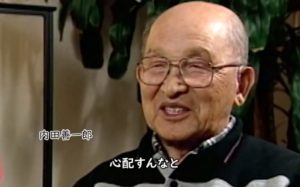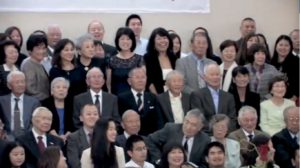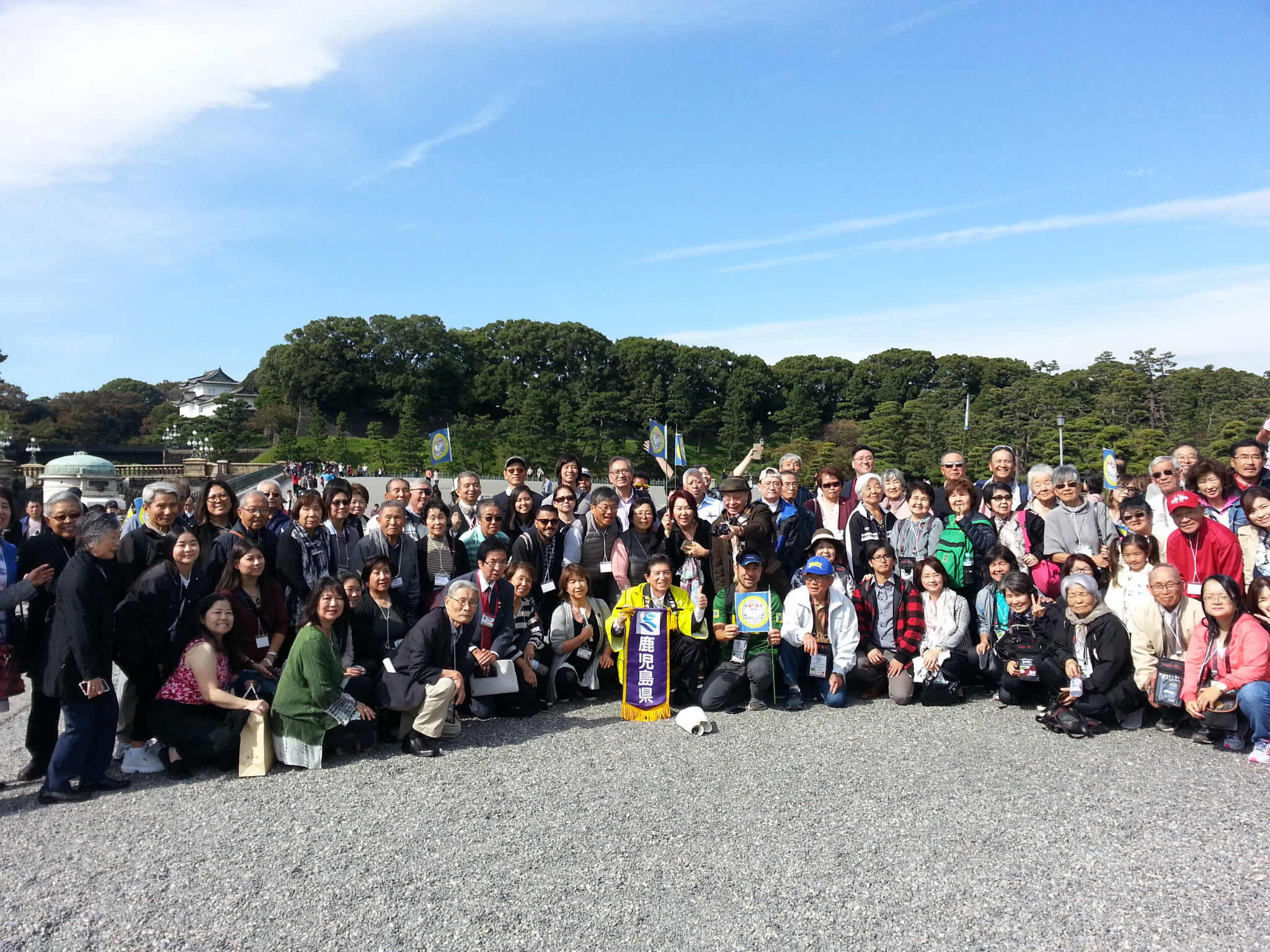Preview
Dream Blossoms
“60 years of Zenichiro Uchida and the Refugee Immigrants”
Kagoshima Foundation Presents
Producer :Ted Uchida Seiichiro
Direction And Script: Junzo Arai
この映像は2019年2月17日よりYouTubeで放映中です。
2018年試写会版とは編集内容が違う場合があります。
「只今英語版の 制作に入っています。 英語版が出来た時にはSALINAS CA, USA のCallifornia State University Monterey BayのJohn Steinbeck Memorial Hall で上映会 の依頼がきています。
またLos Angelesでは4月14日にこの日本語版を百数十名の皆さん(Salute to the Pioneers, 戦前の日系人パイオニアに感謝の会)の皆様へご披露します。」(by Ted Uchida)
このドキュメンタリーは鹿児島県いちき串木野市出身で、「戦後移民の父」といわれる、内田善一郎と、アメリカの大地に人生をかけた同郷の家族たちとの60年におよぶ物語である。
Born and raised in Ichiki-Kushikino city, Kagoshima, Zenichiro Uchida is known as, “The Father of Immigrants”. This story is not his alone. It is the story of the men and their family that Zenichiro helped immigrate to the United States more than 60 years ago.
1950年代、鹿児島出身の男たちがアメリカへ渡った。
彼らの先導したリーダーが「戦後移民の父」といわれる内田善一郎。
若者は狭い国土にひしめいて暮らすより、広大なアメリカに可能性を見出すべきとして地元で移民運動を始めた。
1ドルが360円の時代、農村の若者たちは、善一郎の夢のような儲け話しを真剣に聞いた。善一郎は戦後、派米農業実習生としてアメリカに派遣され、自由平等主義や開拓精神を学んだ。善一郎の夢は貧困にあえぐ地元の男たちをどうにかして渡米させることだったが、日本人による移民は1924年に施行された「排日移民法」の壁に阻まれていた。
そこで、思いついたのが当時、ソ連や東ドイツなど共産政府から迫害をうけた政治難民を対象とした「難民救済法」の適用だ。日米政府にアジア諸国にも適用させるようにかけあった。
しかし、鹿児島の農村は法律の適用には及ばないという調査官の判断で保留となってしまう、しかも当時はまだ戦後間もない時代、反米派が善一郎の運動を批判し、貧しい農民を奴隷としてアメリカへ売り渡そうとしていると噂するものや、善一郎の実家へ運動をやめさせるよう脅迫に訪れる者も現れた。
一方、希望者が増えていく中で悩む善一郎だったが、そこに思わぬ協力者が現れた。日系市民協会の日系2世ロビイスト、マイク・正岡だった。マイク正岡は当時の日系社会の指導者的存在で、戦争によって差別をうけた日系人たちの人権の回復のために尽力していた。マイク正岡は善一郎の移民運動の話しを知り、少しでも苦しむ同じ日本人を救おうと米国議会にかけあった。その介があって事態は好転、難民救済法の適用の道が開けた。
During early 1950’s, young men in Japan could not find jobs or own their own land.
Zenichiro felt that the only way for these men to provide for their families and support themselves was to go to America where wages were better and the land was abundant.
He went to America for one year as part of the Agricultural Trainee Program. While in America, he learned about the Refugee Relief Act where if you qualify as refugee status due to the natural disaster in the early 1950s you are eligible. Prior to this Act, there was a US law that was established that barred Asians from immigrating to America called the “Asian Exclusion Act of 1924”.
However, upon further investigating, he discovered that Europeans were let into USA via the “the Refugee Relief Act”. During that time, Asians in the US began lobbying for their own “Asian Relief Act”, proposing to Congress to allow 3000 visas granted to Asian Americans. Because of lobbyist Mike Masaoka’s (an ally to Zenichiro) efforts, he lobbied on their behalf and was granted 1000 visas for Japan.
Knowing this information, Zenichiro asked both the Japanese and US government to recognize the farmers in the Kagoshima regions as being eligible for the Refugee Relief Act, but was rejected.
However, Zenichiro continued to lobby the US Embassy to admit the men of Kagoshima as refugees. Luckily, the Kagoshima men were able to attain refugee status due to a typhoon (Ruth Typhoon) that had hit the region in the early 1950s.
As Zenichiro continued to work on getting more visas, rumors began to circulate in his hometown of Kushikino (where Anti-American sentiment had grown during the war) that young farmers were being sold as slaves. To make matters worse, his father and his family were threatened by those opposed to Zenichiro’s efforts. Despite his setbacks, word of Zenichiro’s work spread and many more applications were submitted to him.
One day, a friend of Zenichiro called to let him know that JACL lobbyist Mike Masaoka would be visiting Tokyo. Mike Masaoka was a JACL lobbyist from Washington DC and worked to help both Japanese Americans and Japanese nationals with visas.
Their meeting resulted in the inclusion of the Ruth Typhoon victims as part of the Refugee Relief Act. The Kagoshima immigrants were granted refugee status.
From 1955 to 1956, 333 men immigrated to America from the Kagoshima prefecture. They boarded the chartered airplanes and stopped in Hawaii before landing in San Francisco.
This was such a momentous occasion for Japan that their journey was reported on in national newspapers, even going as far as being dubbed the ” Flying Refugee Immigrants”.
 法律は時限法であり、結局、1955年と56年の2年間で計333名が渡米した、羽田空港から飛行機にのり、ハワイを経由しサンフランシスコへ到着、当時飛行機による難民の移動は珍しい、新聞は彼らを「空飛ぶ難民」と書き立てた。
法律は時限法であり、結局、1955年と56年の2年間で計333名が渡米した、羽田空港から飛行機にのり、ハワイを経由しサンフランシスコへ到着、当時飛行機による難民の移動は珍しい、新聞は彼らを「空飛ぶ難民」と書き立てた。
串木野市冠岳出身の松野義人は渡米後に、カリフォルニア州メリスヴィルの労働キャンプでフルーツの収穫作業に従事した。到着した先の宿舎は粗末な作りで驚いたという。
夏は40度を越す炎天下でブドウの収穫作業を続け、日本の家族に仕送りをした。各地のキャンプを出た難民達は皆同じような経験をしてキャンプでの契約を終えた。
その後、善一郎はノーベル賞作家スタインベックの故郷としても知られるカリフォルニア州サリナスに、「花の一大産地を作ること」を目標に、花の栽培事業をはじめた。
サリナスには戦前から日系人達が入植していたが、第二次大戦中、フィリピン、バターン島攻略作戦で地元出身者の多く戦死していたことから、排日感情が根強く残っていた。これを見た善一郎は、当地の日系2世、柴田家がカーネーション栽培で成功していたことを知り、彼らと協力してこの地に「平和の花を咲かせよう」と思い立った。
Yoshito Matsuno, who was from Kanmuridake Village in Kushikino City, was sent to a labor camp in Marysville, CA, and worked in the orchards.
The living quarters of the labor camp where he was sent to were in poor condition. During the summer at the labor camp, temperatures would climb as high as 100 degrees F. Despite the harsh conditions, he continued to work hard and sent whatever money he could to his family in Japan.
Other immigrants shared similar experiences and finished their contracts in 3 years to gain citizenship. Zenichiro moved to Salinas, CA, the home of Nobel Prize winner John Steinbeck, to build a major area production for cut flowers. In Salinas, there were many Japanese Americans living there before WWII.
During the war, it was at the battle of Bataan in the Philippines that many local soldiers from the Salinas Valley became casualties and prisoners of war.
Because of this, many people began to hold anti-Japanese sentiments.
As Zenichiro learned of this history, he formed a partnership with the Shibata Brothers of the Mt. Eden Wholesale Nursery to learn from the best growers to help fulfill his dream of owning his own floral business.
As Kagoshima Immigrants learned of the nursery business boom, many in California decided to follow his lead and move to Salinas.
善一郎は第二次大戦中、東南アジア戦線に赴き、戦友のほとんどを失っており、数少ない生き残りである彼にとって戦後に自分ができるのは「平和」をつくることだと考えていた。これに賛同した難民移住者達は貯金を出し合ってグリーンハウスを設立、さらにこの噂を聞きつけた他の難民家族達も集まり始め、いつしか同郷の者同士たちが協力しあう「鹿児島村」が形成されていった。
頴娃町出身の米満勇蔵は中でも傑出した手腕をもっており松野義人と共同してグリーンハウスを立ち上げ「ローズキング」と呼ばれるようになった。70年代後半から鹿児島村では、全米の75%のカーネーションを生産し、全米一の産地となった。有名雑誌にも取り上げられ、難民移住者たちは、もはや地元経済にとってなくてはならない存在となった。
内田善一郎の一つの夢が叶ったのである。しかし、そんな鹿児島村も、80年代後半、南米での花栽培産業が盛んになり、徐々に衰退。 そして、98年、突然鹿児島村に不幸な知らせがもたらされた米満勇蔵の死だった。重度の鬱と、アルコール依存に悩まされた挙句、自ら命を絶ってしまった。
2016年11月、ロサンゼルスで、鹿児島難民移住者による60周年記念パーティが開かれた。1世パイオニア達の多くはすでに他界、そこには善一郎の姿はなく、10年前に亡くなる直前に記録されたメッセージビデオが上映された。
2016年11月、ロサンゼルスで、鹿児島難民移住者による60周年記念パーティが開かれた。1世パイオニア達の多くはすでに他界、そこには善一郎の姿はなく、10年前に亡くなる直前に記録されたメッセージビデオが上映された。そのビデオを興味深く見つめるのは2世、3世ら若い世代だ。内田善一郎の息子、2世のテッド内田は父の願いである「平和の天使を育てる」ことを旨とし活動を続けている。マーガレット宮内はアメリカで一番最初に生まれた2世でこのパーティの責任者となった。父、宮内武幸は今年91歳で最高齢者の一人、父の鹿児島県人としての 生き方に誇りを持っていると語る。
サンフランシスコ郊外、サンマテオで日本食のスーパーを経営する、摺木隆子さんは、昨年2017年に夫の摺木修司さんを亡くし、経営は息子と娘の二人が引き継ぐことになった摺木隆子さんは1960年に家族4人で父の呼び寄せでアメリカへやってきた。
亡くなった夫も呼び寄せでやってきており結婚後に日本食のトラック販売からはじめ、1980年に苦労してスーパーを開業した。
昨年、夫が亡くなりスーパーを閉めようかと家族で相談したが、それを反対したのは、息子と娘だった。両親のビジネスを継ごうとしない若い日系世代が多い中で彼らは、両親が築き上げた店をなくしたくないと考えている。
On November 3, 2016 in Los Angeles, the 60th Anniversary Celebration for Kagoshima Immigrants was held in Little Tokyo.
Although many Issei pioneers, including Zenichiro, were no longer alive, and attendees were able to watch a video message from Zenichiro, which had been made 10 years prior at the 50th anniversary where Nisei and Sansei were watching it with great interest.
Margaret Miyauchi Leong was the first Nisei born among the Kagoshima Immigrants and she was one of the organizers for this event.
Her father, Takeyuki Miyauchi, was from Kushikino. After his stay at the labor camp, many of his friends had decided to continue working in the gardening business. Miyauchi, however, went a different direction. With his experience in Japan working at the stock exchange, he decided to work in the stocks and bonds business. Miyauchi was very proud of the Kagoshima immigrants and decided to keep record of the Kagoshima immigrants.
He was seen by many as the official historian of their stories.


サリナスは、マリワナが合法化されたため、グリーンハウスは栽培業者にとってかわってしまった。かつての鹿児島村の面影はなくなりつつある。
しかし、松野義人のグリーンハウスは現在、サリナスに唯一残った日系ナーサリーとなった。 このグリーンハウスを支えるのは長女ジャネット松野だ。
ジャネットはグリーンハウスのすぐ横に建てられた小さなトレーラーハウスで育ち、毎日両親を手伝いながら、土曜は日本語学校に嫌々ながら行かされた。彼女にとってのサリナスは閉ざされた世界でしかなかった。
大学を卒業したジャネットは、自分に足りないものを感じ、日本へ行く決心をした。ところが日本滞在中に両親のグリーンハウスは火事になり、また労働組合の介入により、かねてから苦しい経営もままならない状態となった。何も知らないジャネットは一方で父親の故郷で自分のルーツを尋ねる事で自分が何者なのかを知ることができた。
ジャネットは帰国後に学生時代からの友人で中国系アメリカ人の夫と結婚し、グリーンハウスの危機を救う決心をした。現在、ジャネットと夫によるローズは、世界中に輸出されており、サリナスの鹿児島村の伝統は軽うじて守られている。
Meanwhile in Salinas, due to the legalization of Marijuana 2-3 years ago, many of the greenhouses were bought out by Marijuana growers.
The “Old Kagoshima Village” no longer exists. However, the greenhouses operated by Yoshito Matsuno is the only flower grower left among the Kagoshima growers. His daughter, Janet Matsuno, along with her husband Curtis Loui, are responsible for running the daily operation of the Matsuno greenhouse businesses in Salinas.
She grew up in a trailer house next to the greenhouse where she would help her parents throughout her young life until she left for college. In her youth, she would go to a Japanese language school on Saturdays. She felt that the life in Salinas was somewhat of a “closed society”. She felt that she was missing something in her life.
After graduating from college, she decided to go to Japan. While she lived in Japan, over the course of three years, she learned of her family’s roots and was able to visit the home of where her father grew up. While she was there, her parents’ greenhouses caught fire and their business was in jeopardy.
She returned to America to help her family business and to build it back to become one of the premier Rose growers in the US and sells their flowers all over the world.
-Junzo Arai-

